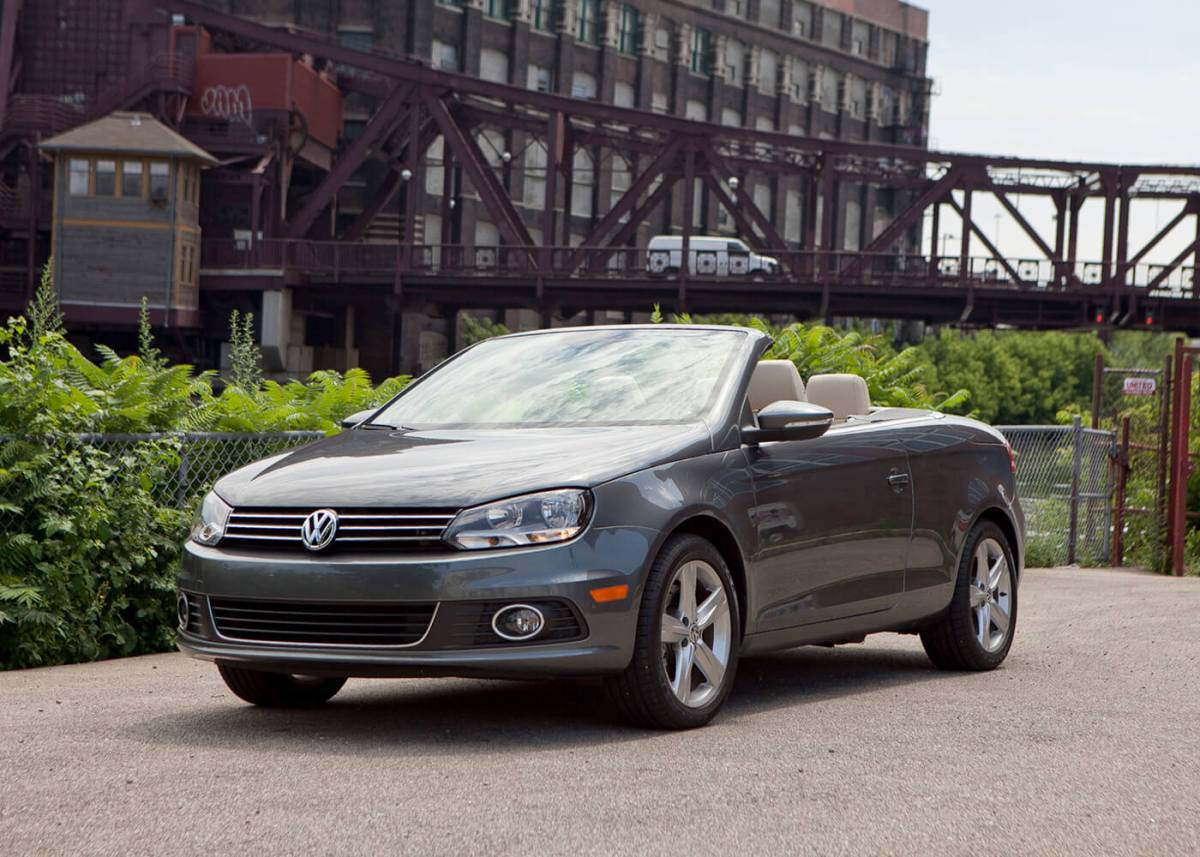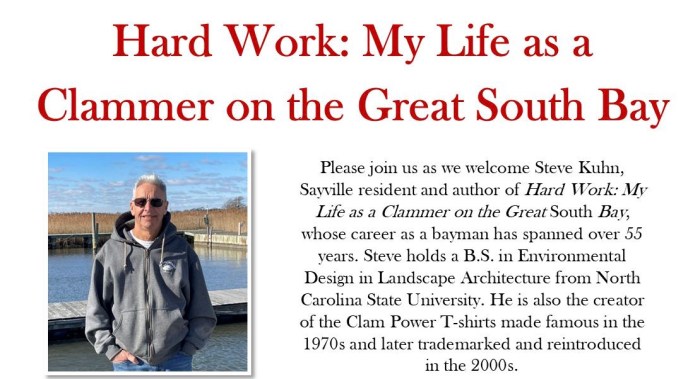
Some cars are designed to be one pure thing, like a minivan or a pickup. Other cars straddle the line between segments. Such is the case with the four-seat Volkswagen Eos. It’s a retractable-hardtop convertible coupe, but it’s not a sports car. It’s fairly pricey, but I don’t see it competing with the best of the luxury class.
The redesigned 2012 Volkswagen Eos is a small convertible that mixes good materials with a pleasant driving experience, but its price rubs up against some established luxury competitors.
What’s New
Redesigned for 2012, the Eos gains the new Volkswagen “face” already seen on the Jetta. Most obvious is a narrower grille that’s replaced the large, plunging chrome grille. There are also new taillights. The car has a more angular appearance overall, though I wouldn’t go so far as to call it aggressive.
The 2012 Eos has the same 200-horsepower, turbocharged 2.0-liter four-cylinder engine as the previous Eos, but the manual transmission option has been dropped. The standard transmission now is a six-speed automatic with a manual mode that allows the driver to select gears. The 2012 Eos comes in three trim levels: Komfort, Lux and Executive. I tested the Lux version.
Convertible Attributes
The roof is where Volkswagen’s attention to detail sets it apart from others in the convertible market. The Eos has a power retractable hardtop. More important, however, is the fact that it’s well-designed. Where other tops shake the car when they open and slam shut, the Eos’ top works as if it’s doing something it’s been designed to do. It takes about 25 seconds to open, but it feels like less time. It does require a fair amount of rear clearance for such a small car, so that’s something to keep in mind, but overall I think it’s nicely done.
Driving the Eos with the top down is enjoyable. There’s a wind deflector that pops up above the windshield and a stand-up deflector screen you can install at the rear. I found I didn’t need the rear deflector. There’s very little turbulence in the cabin without it, but I suppose if you want to keep your hairdo just so, the deflector would come in handy. It’s neither the hardest nor the easiest deflector to put in place, but either way it does block the rear seats from use.
With the roof closed, the Eos still feels pretty open. That’s because the main roof panel over the front seats is glass and can also be retracted as a sunroof. There’s an opaque shade that slides under the glass when you absolutely don’t want any sun to enter through the roof. On a recent 100-plus-degree day, I found it to be superior to the mesh-like screens some carmakers put under their large sunroofs.
Visibility with the roof closed is decent. There’s a large pillar at the rear of the car, but I didn’t notice a major blind spot when passing on the highway. The view straight to the rear feels pinched; it’s not that you can’t see, it’s just a bit claustrophobic. The good news is that there are standard parking sensors for the higher two trim levels. Komfort buyers can’t get them.
If you want a real sense of claustrophobia, check out the trunk. Convertibles often have small trunks, but the Eos takes this to a whole new level. There’s a backpack-sized “box” you can place things under if you want to lower the roof. If you keep the roof up, you can expand the cargo area to a slightly larger, taller box that’s still not very practical. The trunk’s opening is pretty large, but vast swaths of the space are practically unusable no matter what you do with the roof. That’s because Volkswagen has marked areas of the trunk that would seem usable with big “don’t put items here” stickers. (It’s easier to see in the photos to the right.) That’s a letdown, because it limits what you can do and what you can take with you on a weekend trip.
Interior
The Eos’ interior quality is a strength, with one glaring exception. First the good stuff: There’s real wood trim, chrome-flecked window switches and good-looking dashboard and trim materials. Volkswagen is known for being among the pricier options out there, and the Eos shows you why.
The exception is the sound the doors make when you shut them. Both doors are guilty, but the passenger door especially sounds and feels like you’ve broken something. It isn’t a tinny sound; it’s as if somehow the seat belt buckle has gotten stuck in the door, or a panel is banging into something somewhere. More than one reviewer and all my passengers noted it. It’s not just a bad thing in the luxury market, it’s a bad thing in the car market.
There is good interior room for adults, even with the top up. I gave two taller folks a ride home in the Eos with the roof raised, and while the front passenger had to give up a bit of legroom, both said they were comfortable. Getting out isn’t easy for rear passengers, though, because the Eos is a coupe.
Finally, convertibles can struggle with squeaks and rattles, and the Eos is no exception, though it’s on par with the luxury segment’s hardtop convertibles. It’s a similar story with road noise. There’s not a lot — if any — insulation in the Eos’ roof, so you notice a lot of ambient noise in the cabin. Closing the sunshade helps a bit.
Driving
There’s a pronounced lag moving away from a standstill or if you’re cruising and want to pass. Once the lag passes, there’s adequate power to do what you need to, but it took awhile for me to adjust to how the car responded. Since the Eos turns out about 200 horsepower and 207 pounds-feet of torque, I blame the lag on the dual-clutch automated manual transmission — and express my regret that Volkswagen dropped the stick-shift option.
The Eos does offer two ways to cope with the lag. One is to manually select gears via the shifter, the other is to use the automatic Sport mode. Of the two, I preferred Sport mode on the highway because it held gears longer and provided engine braking. In the city, though, I preferred selecting gears manually because that way I was able to drive more smoothly in stop-and-go traffic. The bigger issue for me is that you have to cope with the lag at all. I think the Eos has enough power to be a fun car, it’s just losing the fun somewhere in the system.
Once you get past the lag, the Eos has nicely weighted steering that provides a fair amount of feedback. Still — as you’d expect in an upscale car — you don’t need big muscles to steer the Eos around a parking garage.
Finally, for a convertible, the Eos is a pretty rigid car. I didn’t get much sensation that the car was flexing or wallowing around the road. That’s unusual for a convertible and a mark in its favor.
Safety, Reliability & Mileage
As of this writing, the 2012 Eos has not been crash-tested. As a redesigned model, it does not have sufficient data for reliability reports.
The Eos comes with the antilock brakes and electronic stability system that are required for all cars as of the 2012 model year. It also has side-impact airbags in addition to the required frontal airbags, as well as a rollover protection system that deploys hidden steel beams behind the rear seats in the event of a rollover.
The Eos is estimated to get 22/30 mpg city/highway. Premium fuel is required.
Eos in the Market
As the table reflects, things get interesting when you compare the Eos to luxury convertibles.
Luxury convertibles
Convertible MSRP
2012 Volkswagen Eos Lux $37,250
2012 Audi A5 2.0T Premium $42,600
2011 Lexus IS 250C Base $41,190
2011 Volvo C70 T5 $39,950
While the Volkswagen is the cheapest of the group, it’s within spitting distance of established luxury brands, and that’s a problem. The luxury market can be driven by name and prestige, and Volkswagen hasn’t earned its place with the Volvos, Lexuses and Audis of the world. If shoppers are concerned about prestige, I’m not sure the Eos offers enough to keep them from spending roughly $4,000 more for an Audi or Lexus, let alone $2,700 or so extra for a Volvo.
Yes, there is a lower-priced Eos, so you can knock the price down by about $3,000, but then you lose the automatic headlights, power-folding mirrors, parking sensors, rain-sensing wipers, self-dimming rearview mirror, leather (as opposed to vinyl) door trim and other features. Would the loss of any of those be the end of the world? Maybe not, but isn’t buying a luxury car about not giving things up?
As it stands, the Eos is a nice car, but if you pick it, you’ll be giving up some prestige and driving enjoyment.
Snapshot:
Starting MSRP $33,995–$39,220
MPG
City: 22
Highway: 29
Available Engines
200-hp, 2.0-liter I-4 (premium)
Transmissions
6-speed auto-shift manual w/OD and auto-manual
New or Notable
• Updated exterior styling for 2012
• Standard convertible hardtop
• Front-wheel drive
• Turbocharged 2.0-liter four-cylinder
• Dual-clutch automatic transmission
What We Like
• Sharper styling
• Convertible top has integrated moonroof
• Top-up rear visibility
• Decent trunk space
What We Don’t
• Below-average reliability
• Prefers premium gas
• Rear clearance required when operating top
• Small backseat































